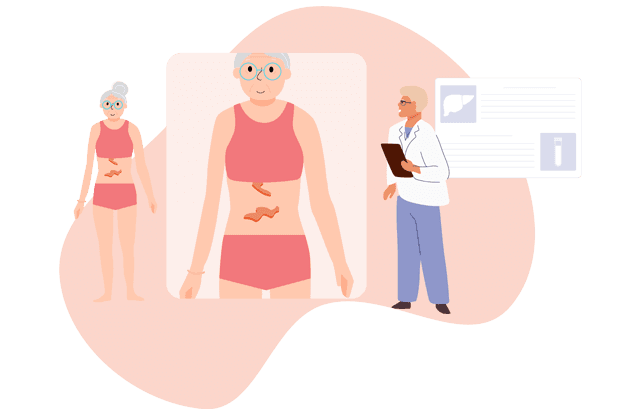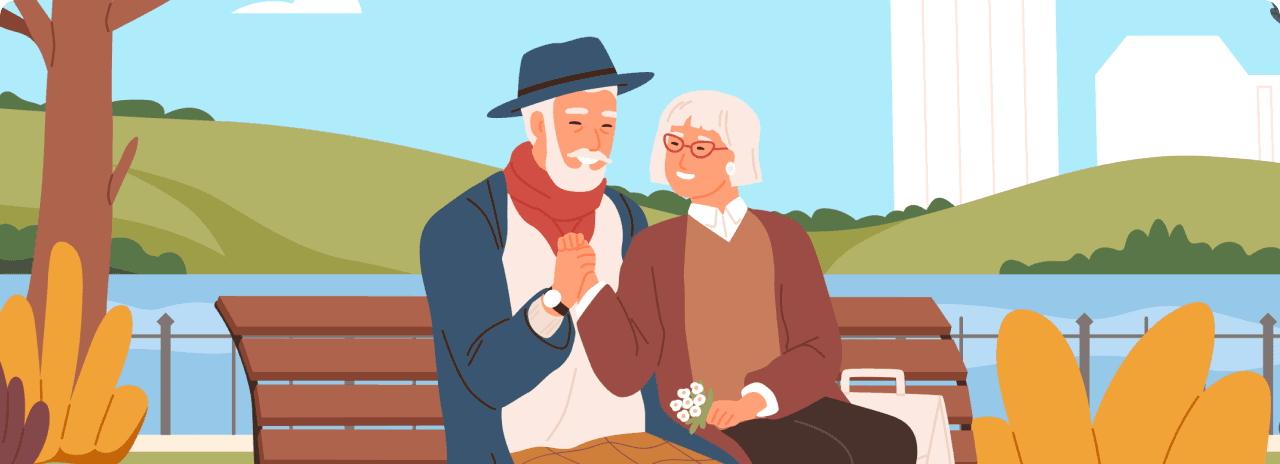
Getting started with treatment
Your healthcare team will take lots of factors into account when considering the best treatment for you, including your lifestyle and needs. Asking questions to understand why your doctor is recommending a particular treatment and voicing any concerns are all part of making sure you are receiving the best care for your cutaneous T-cell lymphoma (CTCL) as well as your other care needs.
Download our guide to support you in discussions with your doctor.
What does ‘disease stage’ mean?
One of the main things your doctor will consider when tailoring your treatment is the ‘stage’ of your disease. The four stages (1–4) and sub-stages (as indicated by letters A and B) of the most well-known forms of CTCL (mycosis fungoides and Sézary syndrome) are:
- Stage 1A: Less than 10% of the skin is covered in patches or plaques. There may be blood involvement, but no lymph node or internal organ involvement.
- Stage 1B: 10% or more of the skin is covered in patches or plaques, and there may be blood involvement, but no lymph node or internal organ involvement.
- Stage 2A: Any amount of the skin surface is covered with patches or plaques and there may be lymph node involvement. There may also be blood involvement but there is no internal organ involvement.
- Stage 2B: One or more tumors are found on the skin, there may be involvement of the blood and lymph nodes. There is no internal organ involvement.
- Stage 3 (A or B): Nearly all of the skin is reddened and may have patches, plaques or tumors; there may be involvement of the blood and lymph nodes. There is no internal organ involvement.
- Stage 4A: There can be any level of skin involvement (patches, plaques, tumours, or total skin redding). Cancer cells are found in the blood in high numbers; cancer may have spread to the lymph nodes but does not involve other internal organs.
- Stage 4B: There can be any level of skin involvement (patches, plaques, tumours, or total skin redding) and cancer cells may be found in the blood; cancer may have spread to the lymph nodes and has spread to other internal organs.



What types of treatments are available?
For some patients, their doctor might recommend a plan called active monitoring. This involves regular check-ups with your healthcare team to check if the disease is progressing and how it is affecting you. Active monitoring means you will not be receiving a treatment whilst being monitored, and monitoring will be used to determine if you need treatment.
However, your doctor may decide you require active treatment.
In the early stages of CTCL, specifically mycosis fungoides, skin-directed treatments (SDTs) may be enough to manage symptoms and control the disease. Some SDTs are:
- Steroid-containing skin creams: Steroids are a type of drug that can help control inflammation, clear skin lesions and help skin symptoms such as itch and discomfort.
- Light therapy: A treatment that uses certain types of light like ultraviolet light to kill or damage cancer cells. It is also called phototherapy.
In later stages, systemic treatments, which affect the whole body, can be given on their own or together with SDTs. Some types of systemic treatments include:
- Immunotherapy: A type of treatment that helps your immune system attack cancer cells, similarly to how your immune system can attack bacteria.
- Targeted therapies: A type of therapy that detects and attacks specific types of cancer cells, attempting to minimise damage to normal (non-cancer) cells; for example, by using drugs or helping your immune system to kill cancer cells.
- Methotrexate: This drug controls the disease by slowing down the production of new cells.
- Bexarotene: This medication belongs to a group of drugs called retinoids. It works by slowing down the growth of cancer cells.
- Chemotherapy: This treatment uses anti-cancer drugs to kill cancer cells and there are several different types that can be used to treat skin lymphoma, either individually or in combination.
- Photopheresis: This treatment involves removing blood from the body, treating it with ultraviolet light and then reinfusing the blood back into the body.
Additionally, radiotherapy may be given in later stages. Radiotherapy uses high energy particles or rays to destroy cancer cells in the area that is being treated. It can be used to treat specific areas of the skin or to treat the whole skin. Radiotherapy used to treat the whole skin is called Total Skin Electron Beam Therapy or TSEBT.
Researchers are always finding better ways to treat cancer. These new methods are tested in clinical trials and might be called ‘experimental treatments’. Talk with your doctor to find out if there are any clinical trials you could consider taking part in.
For more detailed information on treatments, explore these resources
A video on combination treatment created by the Cutaneous Lymphoma Foundation
This 3-minute video explains what combination therapy is, and when it might be used in patients with the most commonly known types of CTCL.
Kyowa Kirin has received permission from the Cutaneous Lymphoma Foundation to link to its materials. By clicking on this link, you will leave the CTCL Answers site.


A video created by the Cutaneous Lymphoma Foundation
Listen to lymphoma expert Dr. Niloufer Khan provide an overview of early and late stage treatments for people with cutaneous lymphoma.
Kyowa Kirin has received permission from the Cutaneous Lymphoma Foundation to link to its materials. By clicking on this link, you will leave the CTCL Answers site.

Do you want information on what happens in follow-up appointments or what happens when a treatment stops working?

Would you like some information on how you can manage your condition in day-to-day life?
KKI/GB/MOG/0130
July 2025


How useful did you find this page?
CTCL Answers has been created for people living with CTCL and their families.
We would love to know how useful you found the content on this page to help shape any future updates to this website.

